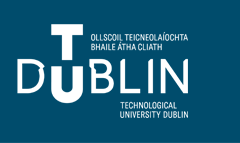Document Type
Article
Rights
Available under a Creative Commons Attribution Non-Commercial Share Alike 4.0 International Licence
Disciplines
Inorganic and nuclear chemistry, Physical chemistry, Colloid chemistry, Ceramics, Coating and films, Nano-materials
Abstract
In order to study the visible light photocatalytic activity of nitrogen doped titanium dioxide, the interaction between nitrogen dopant sources and titania precursors during sol–gel synthesis is investigated. N–TiO2 was synthesised using the sol–gel method using 1,3-diaminopropane as a nitrogen source. Samples were annealed several temperatures and the percentage of rutile present determined by X-ray diffraction to be 0% (500 ◦C), 46% (600 ◦C), and 94% (700 ◦C). The reducing amounts of anatase at higher temperatures are studied using FTIR, which suggests the absence of any polymeric chains formed by the chelating agents, which would normally extend anatase-to-rutile transformation temperatures. Differential scanning calorimetry shows that crystalliation occurs before 500 ◦C, providing the crystalline form determined by XRD at 500 ◦C. Increased temperature also resulted in diminished visible light absorption capability, with only the 500 ◦C sample showing significant absorption in the visible region. XPS studies revealed that nitrogen remained within the TiO2 lattice at higher temperatures. Consequent with the reduced visible light absorption capacity, photocatalytic activity also reduced with increased annealing temperature. Degradation kinetics of methylene blue, irradiated with a 60 W house-bulb, resulted in first order degradation rates constants of 0.40 × 10−2, 0.19 × 10−2, and 0.22 × 10−2 min−1 for 500, 600, and 700 ◦C respectively. Degradation of Degussa P25 was minimal under the same conditions, and that of undoped TiO2 was 0.02 × 10−2 min−1. Similarly, using 4-chlorophenol under solar irradiation conditions, the N-doped sample at 500 ◦C substantially out-performed the undoped sample. These results are discussed in the context of the effect of increasing temperature on the nature of the band gap.
DOI
https://doi.org/10.1016/j.jhazmat.2011.08.074
Recommended Citation
Nolan, T. (2012) Effect of N-Doping on the Photocatalytic Activity of Sol–Gel TiO2. Journal of Hazardous Materials, Volumes 211–212, 15 April 2012, pp. 88–94. doi:10.1016/j.jhazmat.2011.08.074
Funder
Science Foundation Ireland


Publication Details
Journal of Hazardous Materials, Volumes 211–212, 15 April 2012, Pages 88–94
Special Issue: Nanotechnologies for the Treatment of Water, Air and Soil